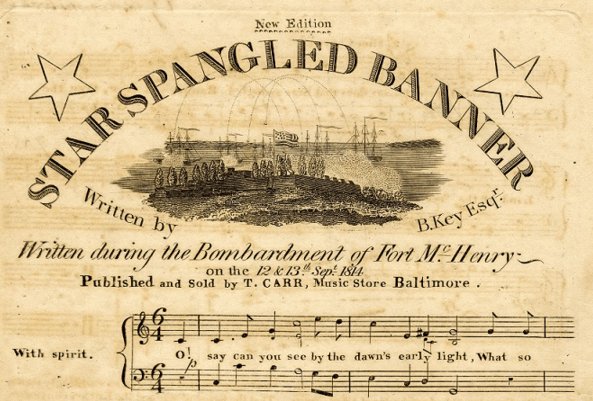When Igor Stravinsky was born, it was the Russian Empire who had a “special relationship” with the United States, not Great Britain. By the time he emigrated to Switzerland, the Russian Empire was the Soviet Union and Stravinsky was a global nomad. The talented composer had a knack for arranging and re-arranging the national anthems of his adoptive countries. Russia, Switzerland, and France all had Stravinsky versions of their national anthems.
It was while living in the United States in 1941 that Stravinsky decided to make a contribution toward “fostering and preserving the spirit of patriotism” in America. He re-arranged the national anthem of the United States, most notably to make it easier to sing.
Stravinsky moved to the U.S. in 1939 at the outset of World War II. The U.S. didn’t adopt the Star-Spangled Banner as its official national anthem until 1931, just in time to give Stravinsky a new home and a new anthem to arrange. During both World Wars, orchestras were encouraged to play the song and audiences were encouraged to sing along. There could be stiff penalties for noncompliance — especially for foreigners.

But Stravinsky didn’t need to be pushed to play the anthem. He was more concerned about the structure of the anthem.
He opened his first show at the Hollywood Bowl in Los Angeles, Calif. in 1940 with the traditional, well-known version. This version was arranged by Walter Damrosch, a New York musician and composer. The problem with that version is in its harmonization, according to the Marine Corps Band at the time. But concerns about harmony were pushed aside and Damrosch’s version became the norm across the country.
But not for Stravinsky. He heard a number of re-harmonizations of the tune in his time and decided to arrange his own. He even wrote to President Roosevelt about his intentions in editing the music.
Mr. President:
Searching about for a vehicle through which I might best express my gratitude at the prospect of becoming an American Citizen, I chose to harmonize and orchestrate as a national chorale your beautiful sacred anthem the Star-Spangled Banner. It is a desire to do my bit in these grievous times toward fostering and preserving the spirit of patriotism in this country that inspires me to tender this my humble work to you as President of this Great Republic and to the American People. Believe me.
Faithfully yours,
Igor Stravinsky
Playing his arrangement in the Boston Symphony Hall at the height of World War II in 1944 was another story.

Legend has it the Boston Police Department wasn’t thrilled with the changes to the national anthem and that the composer was breaking a Massachusetts law by “tampering with national property” and that he was to be arrested. Though the arrest never happened, the police did cite a state law about how the anthem should be played. The police misapplied the law, however. The law was made against using the Star-Spangled Banner “as dance music, as an exit march, or as a part of a medley of any kind.”
Instead of being fined or arrested, he simply removed the song from his set list.
Stravinsky would play his rearrangement for years after World War II ended, right up until his death in 1971. At his last show at the Hollywood Bowl in 1966, he closed with his version of the anthem, his own exit march. No one fined him.


